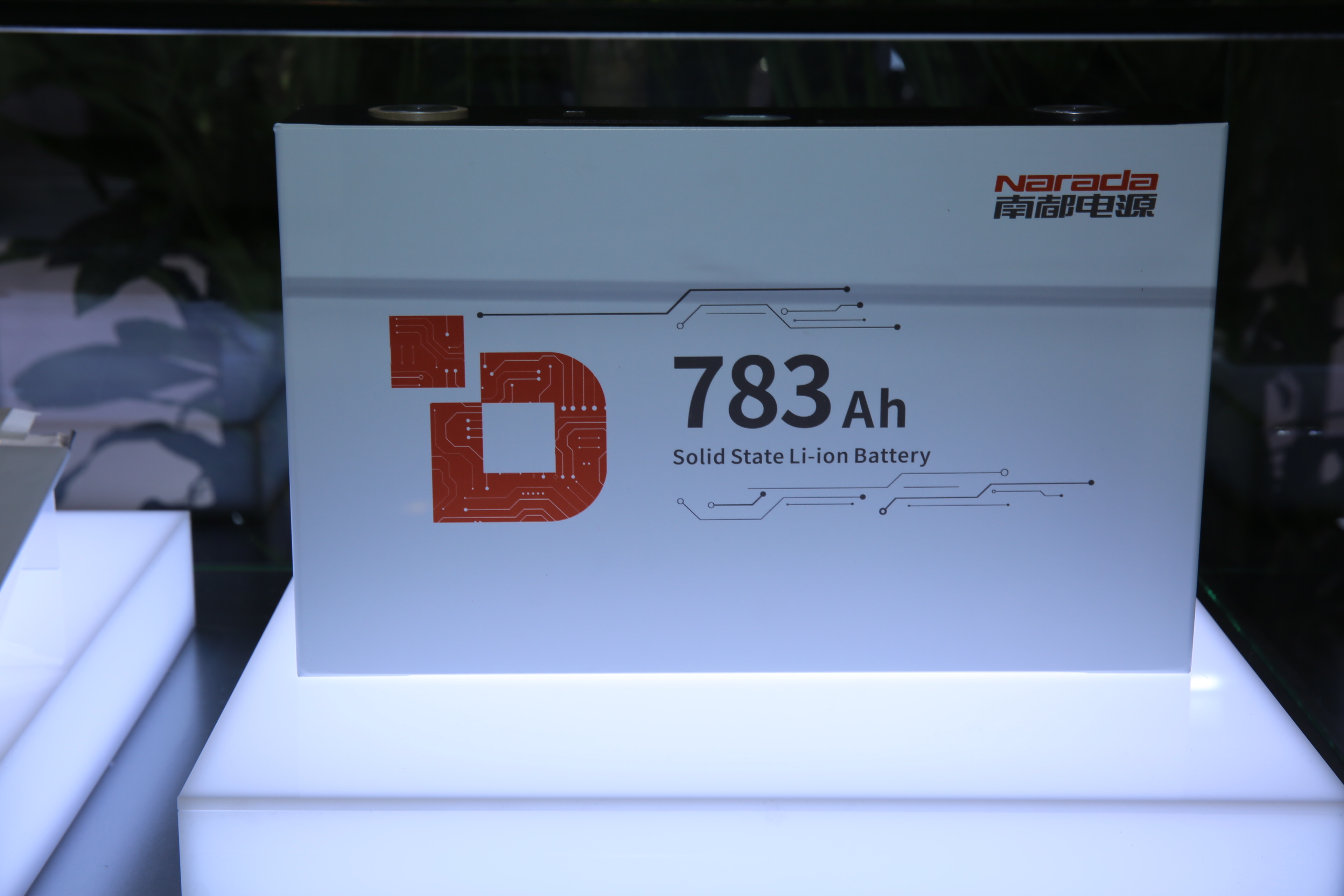On April 10, Narada officially launched its 783Ah ultra-high capacity solid-state energy storage battery. This marks another significant breakthrough for the company in the field of solid-state batteries, following the successful development of its 30Ah all-solid-state battery.

Narada’s R&D team has achieved a leap in both energy density and safety performance through three core technological innovations: flexible biphasic oxide solid electrolyte, multi-layer heterogeneous composite structure design, and in-situ electrolyte film formation technology.
Tackling the Brittleness Challenge of Oxide Electrolytes
Addressing the long-standing issues of high brittleness and large interfacial resistance in oxide electrolytes, Narada developed a flexible biphasic oxide solid electrolyte. Through microstructural modulation, the new material significantly enhances flexibility and mechanical strength, effectively reducing the risk of electrolyte cracking.
This electrolyte features a high ionic conductivity of 10⁻³ S/cm, a wide electrochemical window, excellent air stability, and cost-effectiveness, laying a solid foundation for large-scale industrialization.
Reconstructing the Electrode – Electrolyte Interface
Solid-state batteries often suffer from poor “solid-solid” interfacial contact, leading to high resistance and poor cycling performance. Narada’s proprietary in-situ electrolyte film formation technology enables the electrolyte to infiltrate into the electrode and self-assemble into a thin film, creating a flexible coating around the active particles. This greatly reduces interfacial resistance.
Multi-Layer Heterogeneous Composite Solid Electrolyte Structure
The 783Ah ultra-high capacity solid-state battery employs a multi-layer heterogeneous composite structure in its electrolyte design.
The LiCon functional layer enables fast ion transport and provides strong support. Meanwhile, the SIL interfacial layer enhances solid-solid contact between the electrode. Together, they build an efficient lithium-ion conduction pathway, improve mechanical strength and interfacial compatibility, and promote interfacial ion transfer.
Backed by these three core technology breakthroughs, the Narada 783Ah solid-state battery boasts is not less than 10,000 cycles, Single-cell energy more than 2.5 kWh, energy efficiency over 95%, volume energy density greater than 430Wh/L.
Thanks to the inherent safety of solid-state batteries—no liquid leakage or fire risk—this product is well-suited to meet the safety, stability, and durability demands of large-scale energy storage systems.
With the continued maturity of its technology and further reductions in manufacturing costs, Narada is poised to accelerate the large-scale application of its 783Ah ultra-high capacity solid-state battery in the energy storage market.




